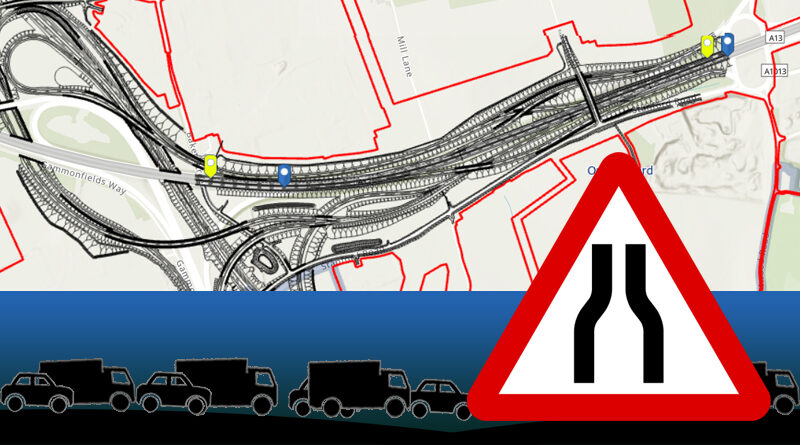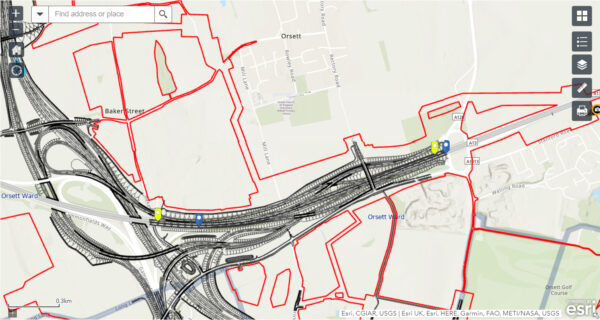LTC – A13 Bottleneck
We have known for sometime now that the proposed Lower Thames Crossing would generate an A13 bottleneck, if it goes ahead. Sections of the A13 in both directions would drop to just 2 lanes of through traffic on the A13.
We are all more than aware of how much the A13 widening project, that Thurrock Council are currently working on costs. Not to mention how much disruption it is causing on our local roads. The A13 widening that is currently happening is nothing to do with Highways England. The idea of the widening project was meant to ensure that the A13 is 3 lanes in each direction between the M25 and the Stanford Junction. Details of Thurrock Council’s A13 widening project can be found on their website – www.thurrock.gov.uk/a13-roadworks/widening-a13.
However, as we have previously highlighted, if Highways England are granted a DCO for the proposed Lower Thames Crossing, with the current design, it would mean a section in each direction would result in a bottleneck section of just 2 lanes.
Look at the evidence
NB. Highways England only detail the number of lanes to the west of the Orsett Cock roundabout.
A13 westbound would drop to 2 lanes between the two blue markers. And the A13 eastbound would drop to 2 lanes between the two yellow markers. (Click image to enlarge in new tab)
The maps above are screen captures taken from the LTC interactive map. On that map you can zoom in and actually count where the lanes drop.
The lanes are also detailed in Map Book 1 – General Arrangements. You will need to look at the map of Sheets 26 and 29 and again zoom in to count the lanes.
The sections are around 1 mile long, which isn’t a huge length, but it more than enough to cause traffic flow issues, on an already busy stretch of the A13.
This issue was highlighted by HE in 2020 on pages 54 and 55 of the Supplementary Consultation Guide. It simply referred to as ‘Point 7 – The A13 eastbound has been reduced to two lanes from four lanes, near the Orsett Cock roundabout. This removes the need for drivers to change lanes on the A13.’
Note how it only referred to eastbound, despite the fact that maps then and maps now show that the A13 would drop to 2 lanes in both directions for a section.
This is still an issue and concern of the LTC today, as can be seen when you review the Community Impacts Consultation General Arrangements map.
What HE say
HE will say that it is to do with industry standards of dropping lanes when you have a filter lane and/or slip road leaving, and then it is added again as the next slip road joins the main route. It may be considered industry standards to HE, but we call it a bottleneck and a serious concern!
Oh and don’t forget
There would also be extra traffic on the A13 and Stanford junction due to the Stanford Detour that the LTC would inflict upon the area. So all in all we can expect to experience more issues, congestion and pollution on and around the A13 if the proposed LTC goes ahead.
Related
Map Book 1 – General Arrangements (2021) – click here
LTC – A13 junctions unravelled – click here
Widening of LTC to A13/Orsett Cock slip road – click here


